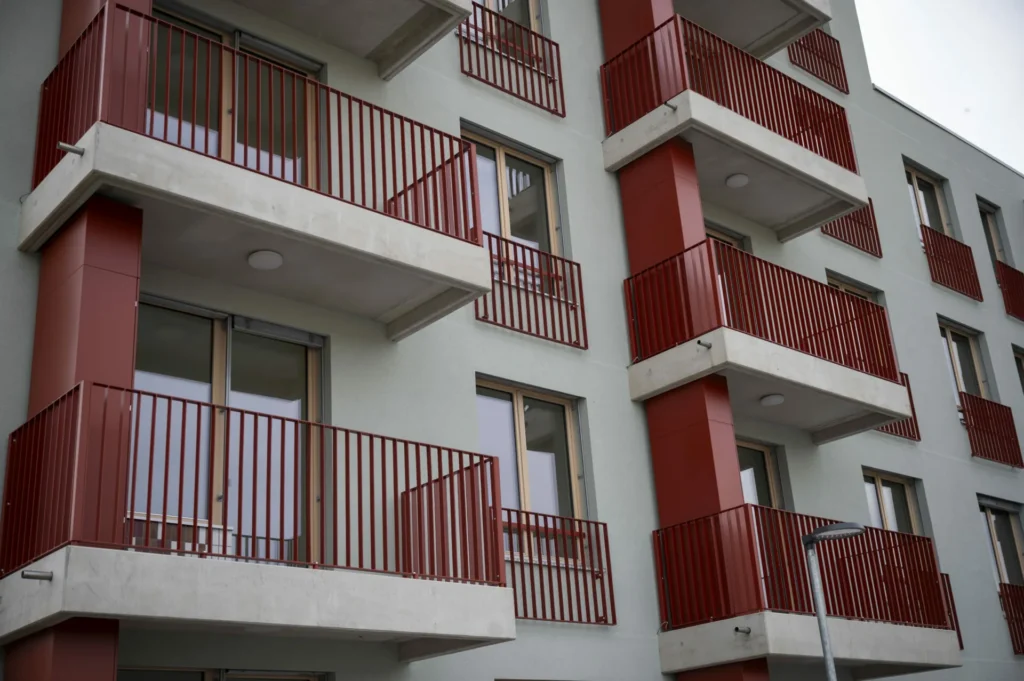For many years, Slovenian housing policy has been stuck in purely socialist waters, where solutions have been sought only through state intervention – state repression and direct state investment. The paradox is that it is precisely such measures that are causing the basic problem of housing policy, namely the housing shortage. On the one hand, the state is stifling a vibrant rental market, while at the same time, it itself – as the most irrational actor – would like to participate in the market. This, of course, leads to the anomalies that are manifested as symptoms of the current situation. Niko Gamulin pointed out in a short analysis on the social network X that the state is, in fact, the underlying problem, which is being solved by the ministry responsible for a solidarity-based future, led by Simon Maljevac.
“There are ideas circulating in the public that the housing crisis can be solved by more regulation. The truth is brutal – the crisis was not created by the market. It was created by the state. This is not opinion, this is data,” Gamulin wrote. He presented a series of data to support his thesis.
First, he pointed out the lie that rising housing prices and rents are a global problem. This may be true, but the Slovenian problem is much worse than the global one. While housing prices in the EU (2015-2023) have risen by 48 percent, housing prices in Slovenia (2015-2023) have risen by 86.22 percent.
He cited artificial scarcity as the main cause of the current situation. The state does not encourage the supply of new housing, but actively stifles it. How? Through two main mechanisms – paralysing bureaucracy and punitive taxes. Obtaining a building permit is a nightmare in Slovenia, as the process takes many years, and as a result, sales of land for construction have fallen by 45 percent since 2021, while land prices have risen by 17 percent.
The state as money-grubber
“The result of this blockade?” asked Gamulin rhetorically. In 2023, only 797 new apartments were built in Ljubljana, with a population of 300,000. This is not a market failure, but a politically engineered disaster that the state is making good money out of. It is not really the fault of “greedy investors”. It is the state that is the money-grubber, benefitting off of every new housing unit: VAT, municipal contribution, property tax, capital gains tax … The result? Out of a 400,000-euro apartment, almost 60,000 euros goes directly into the state and municipal coffers (VAT + municipal contribution). The state is, therefore, not the saviour, but the biggest financial beneficiary of the crisis it helped to create.
The state is a bad manager
In Slovenian politics, it all ends with the phrase: “Let the state build its own housing!” Gamulin argued that history proves the fact that the state is a disastrous builder. The Court of Audit’s report is clear – the state has built only 32.5 percent of the planned non-profit housing, which is less than a third.
Examples of good and bad practices
Gamulin pointed out that the majority of Slovenian politics and the profession would like to see the Helsinki model, which he himself sees as a dangerous distraction, as it is a targeted social programme for the chronically homeless, not part of a housing policy for all citizens. Moreover, the model is expensive, depends on public money and is already showing signs of collapse in Finland.
Nevertheless, there is a solution that no one is talking about, but it has been proven to be effective. It is called the Auckland model. As Gamulin explained, in 2016, New Zealand radically simplified regulations and allowed an increased density of development – also known as upzoning, resulting in an explosion of new housing, and deregulation in Auckland not only helped the market, but led to a threefold increase in the construction of state-provided housing. This means that the free market has allowed the state to build more homes for the most vulnerable. Liberalisation is the best social policy.
So, in Ljubljana, we have restrictions, bureaucracy, we are facing stagnation, and as a consequence, we have few new permits. Prices are raging, social construction is in crisis. In Auckland, however, deregulation, liberalisation, market growth and a record number of permits are in the foreground, price growth has moderated, social construction is in full swing.
The choice is clear
Gamulin believes the choice is clear. The choice is between ideological stagnation and dynamic growth. In the case of the former, we can continue to blame Airbnb, introduce ineffective regulation and wait for a state that is demonstrably incapable of solving the problem, while the other choice requires us to embrace what works, which is radical deregulation, lower taxes and the use of technology to eliminate bureaucracy.
A fresh look
Gamulin’s analysis therefore provides a fresh perspective on the housing problem, which in Slovenia has become completely ideological and dogmatic under this government. The government is no longer even talking about other solutions, only about taxpayers using their money to build housing for those who cannot afford it. He also pointed out the great hypocrisy of the state, which, in reality, creates the shortage itself by ‘regulating’ the housing market, and then wanting to solve the problem with our money. In doing so, it is casually trying to satisfy the needs of its construction patrons who work in politics.
Tomaž Štih, a former politician of the Civic List (Državljanska lista – DL) and founder of the first libertarian blog in Slovenia, better known to the public under the nickname Libertarec (Libertarian), has shed similar light on the issue. Last December, he clearly described the reasons why young people cannot afford housing.
I. K.


